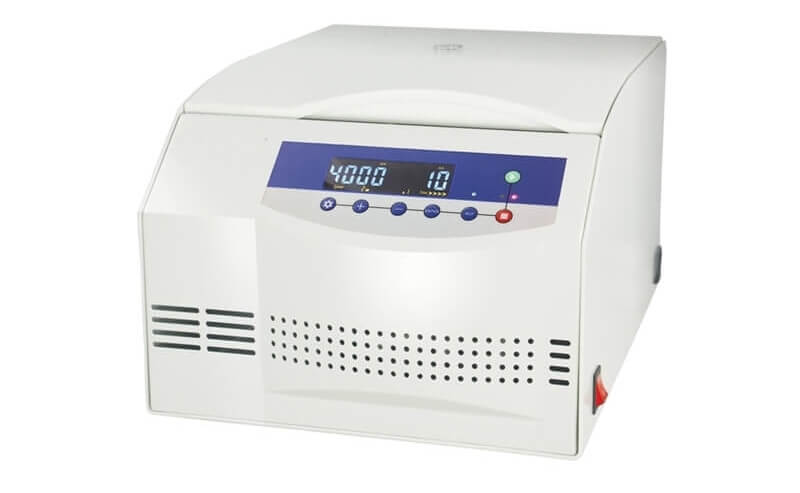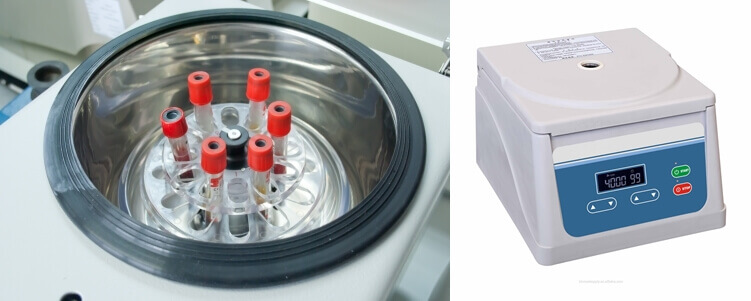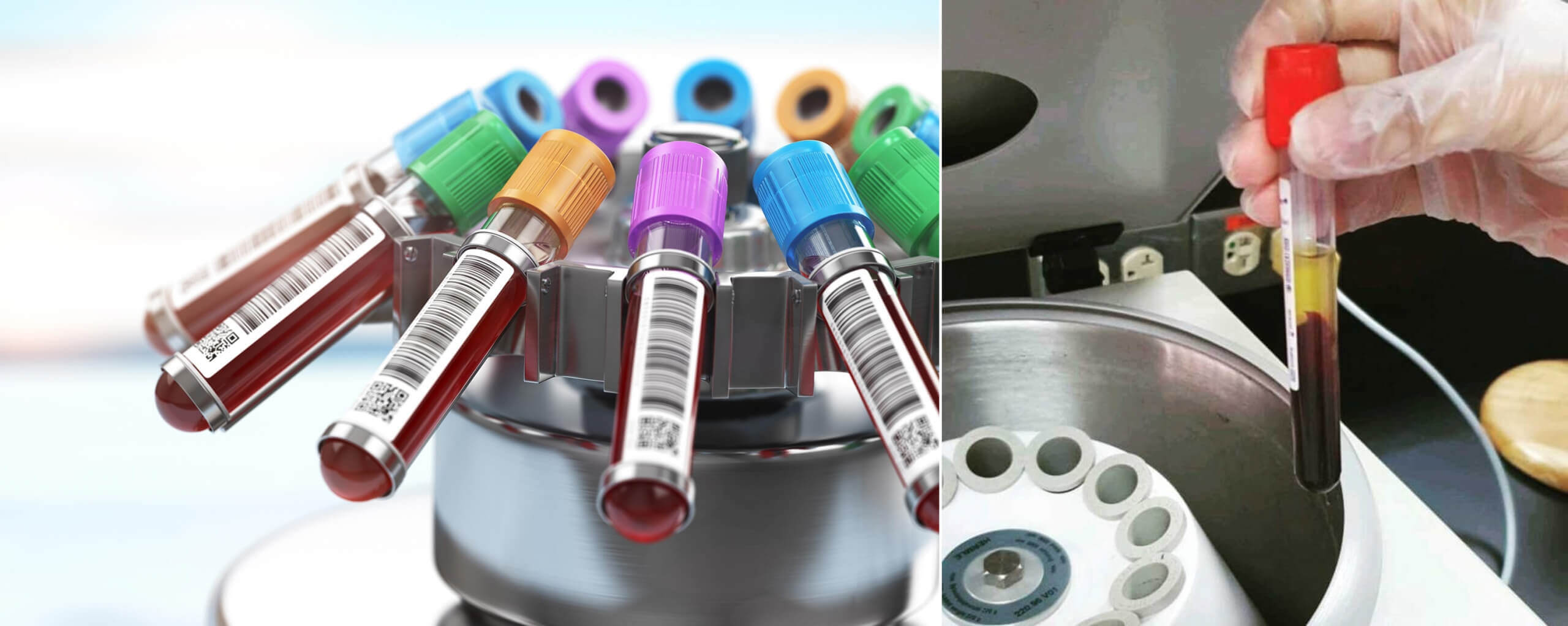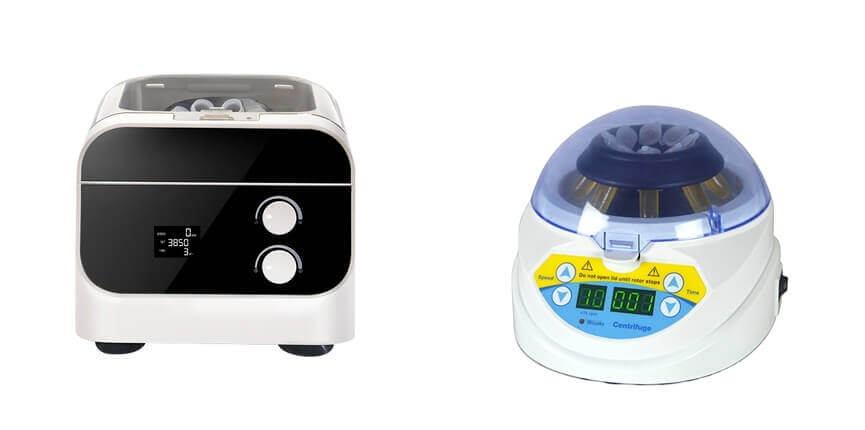Plen Medical-Serum Centrifuge Machine Center
Your Reliable and one of the best Blood Serum Centrifuge machine manufacturers in China
With the development in medical science and technology, different equipment is being launched. The launch of this equipment is nothing less than a blessing.
Serum Centrifuge is one of the most prominent inventions that has played an important role.
Serum Centrifuge is extensively used in the medical sector, offering a wide range of benefits.
Especially, the serum centrifuge has proven to be beneficial for the separation of plasma and blood. The serum centrifuge machine is mostly used in the medical sector to boost treatment procedures.
What was serum centrifuges?
Serum is the liquid part of whole blood collected after the blood has clotted. The clot was removed by centrifugation, and the resulting supernatant, called serum, was carefully removed using a Pasteur pipette.
Then the centrifuge can now start to function, and the cells are removed through some high-speed rotation principles of the centrifuge.
Will the sample flow out?
No, the centrifuge is locked with a safety door lock when it is working, so the sample will be firmly locked in the centrifuge before it stops running, so there is no need to worry about leakage
What happens if you spin blood before it clots
If centrifuged is completed before coagulation, fibrin clots formed on the top of the cells are common in hemolyzed specimens.
Therefore, the gel barrier can also be incomplete, and may even lead to false separation of serum and cells, thereby affecting the test results.
What happens if you wait too long to centrifuge the sample?
If the waiting time is too long, it may lead to the formation of fibrin clot in the serum phase of the centrifuged sample, so it will need to be processed in time to make the clot form an edge, and because the time is not grasped properly, it will cause sample contamination.
How soon should serum be separated?
Because serum requires a certain clotting time, it is necessary to use 30 minutes to an hour for blood clotting before spinning and separating and at a suitable room temperature. Centrifugation delay may adversely affect sample quality and may cause inaccurate results.
Why must centrifuge tubes be balanced?
Even a slight weight imbalance between the samples can cause the centrifuge to vibrate, shake uncontrollably, and even explode in extreme cases.
In the worst case, it may cause a sudden explosive failure of the motor or rotor and cause serious injury to laboratory personnel.
A serum centrifuge is a machine that follows the same principle as a centrifuge.
Serum centrifuge ensures that the liquid and cellular proportions of the blood are separated properly.
The serum is the liquid part of the blood, which is only collected after clotting.

Blood Serum Centrifuge for Separating Cells From Plasma PM4D-1
The Centrifugation process allows the removal of clots using the Pasteur pipette. However, the blood cannot clot within the plasma tube and is further removed using the centrifugation process.
Serological Centrifuge is also referred to as serfage, laboratory equipment.
This machine is mostly used in the blood banks to separate serum from the red blood cells.

The serological centrifuge is one of the most important devices in blood banking. This serum centrifuge machine plays an important role in washing red blood cells and promotes grading.
However, it is necessary to maintain the temperature and speed when using the serfage, as too much or too little of it can damage blood.
The serum preparation for blood protocol is exclusive, which further helps to obtain centrifuged blood. Centrifugation of blood is also referred to as blood fractionation.
In this process, the different parts of blood are separated. The red blood cells are obtained on the centrifuge tube’s bottom.

Centrifuged blood results from centrifugation, which helps obtain the different components, namely, platelets, plasma, and red blood cells.
Red blood cells being the heaviest ones are accumulated at the bottom.
Most of these elements are precipitated in layers. The components of blood are broken down into smaller fractions.
In blood banks, they follow a very comprehensive procedure to get the serum from blood.
The Serum Centrifuge tube should not have any anticoagulant to obtain serum from blood cells.
It is necessary to use a sterile empty tube. It is advisable to keep the serum in a safe place, free from any contamination.
There are certain restrictions on the individual specimen.
Hence, before following the Centrifugation process for obtaining serum from the blood, it is necessary to check the conditions. The best way to collect serum is to conduct venipuncture.
Once you have done the collection, you shouldn’t centrifuge the blood immediately. The blood needs around 30 minutes to clot before following the process of centrifugation.

However, the time range should be between 30 minutes to 1 hour and not more.
After one hour of collection, centrifugation needs to be done around 15 minutes.
The serum can be collected in a plastic bottle. It is best to avoid the usage of plastic serum separator tubes.
It is essential to maintain the speed and time to obtain serum from blood. Since centrifuge is used to separate serum from blood, it shouldn’t be stopped immediately.
As per the protocols, it is necessary to ensure that the samples are allowed to clot for a significant time before centrifugation.
According to the protocols, it is also necessary to maintain the room temperature for plasma preparation.
Since the blood gets separated into three different layers, it is necessary to stop the Centrifuge at the specified time and not break it.
Apart from the preparation and obtaining process, it is crucial to managing the storage as well.
However, before storage, it is necessary to take care of the turbidity of the samples.
The turbid samples can be put for centrifugation again, which will play an important role in removing insoluble matter.
It is crucial to use the right elements for maintaining the serum centrifuge machine.
If the blood has any additives, these need to be removed too. The serum and plasma preparation stage is extremely crucial to obtain them accurately.
To obtain blood from serum, it is necessary to maintain safety standards. Hence, most of the blood banks consider following the serum separation from blood protocol.
The serum is the liquid part of the blood collected after the whole part of blood has turned into a clot.
It is during the centrifugation process, the removal of a clot happens. This contributes to obtaining serum in the pipette from the blood.
Thus, plasma is the part of the blood obtained in the tube after treating an anticoagulant.
However, in plasma tubes, clotting does not happen. The cells are separated using a centrifuge.
Similarly, plasma from the blood too is obtained in the pipette.
It is necessary to understand how long blood needs to be centrifuged. The turbidity and additives have a huge impact on the centrifugation process.
Usually, it is suggested to centrifuge the blood for half an hour. However, how long you centrifuge the blood also depends on what you’re trying to obtain- plasma or serum.
Once the blood has turned into a clot, it can be centrifuged for around 10-15 minutes.
However, it is necessary to allow the blood to settle at least an hour before the centrifugation procedure.
Before starting blood centrifugation, it is necessary to allow the blood to settle for around 30 minutes to 1 hour.
This will be beneficial for preventing the clot from accumulating any damage.
Serum centrifuge samples prove to be more effective for testing than plasma.
This is mostly because serum releases the constituents from cells during the clotting process. This helps to ease the centrifugation process.
The blood is Centrifuged for around 10-15 minutes to obtain plasma.
The centrifugation needs to be done within one hour of the collection of the sample.
Once the process is complete, the serum needs to be transferred to the screw-cap plastic vial.
The speed at which the blood is centrifuged will help in the accurate correction of the samples.
The serum centrifuge speed for blood is around 2200-2500 RPM.
For coagulation testing, the spin speed should be around 3500 RPM for mostly seven minutes.
One of the most asked questions is if it is possible to separate serum from blood without a centrifuge.
Well, that is possible. Nonetheless, it is extremely crucial to manage the basics and centrifuge the blood properly.
Filtration can be one of the most effective methods to separate serum from blood.
It is advisable to allow the blood to turn into a clot. Once the blood has turned into a clot, the filtrate can be coagulated. This plays an important role in achieving the serum.

However, this process works best only for obtaining serum. If you want to separate plasma from blood, centrifugation is the most recommended method for separating blood.
Another method for separating serum from blood without a centrifuge is just to let it sit still.
The blood sample should be allowed to chill for around 24 hours at room temperature, and all the phases will start to separate.
Blood is made of different components, and depending on the density of each component, they will start to separate.
This process provides greater insight into achieving plasma.
However, it is necessary to maintain the integrity of the red blood cells. Moreover, when the blood separation is done without a centrifuge at room temperature, the process can be too long.
This is mostly because the red blood cells may release hemoglobin.
However, hemoglobin release in plasma can disrupt the entire process. Therefore, it is necessary to keep a check on the entire process.
As per experts’ advice, it is necessary to follow the safety procedures to promote blood centrifuge.
Each layer of blood needs to be separated carefully from each other to obtain plasma and serum separately.
The technicians at blood banks follow comprehensive safety procedures to centrifuge blood safely. Some of the prominent safety measures to follow include the following

The centrifuge tube is meant to avoid spillage. However, before starting the Centrifugation, it is necessary to check for leaks and spills in samples, serum centrifuge machine, and rotor.
Moreover, the storage plastic vial needs to be checked too.
Before opening the cover for sample collection, it is necessary to ensure that the centrifuge machine has completely stopped. If the lid is opened before the process, it will harm the entire process.
The technicians need to adorn proper safety kits to prevent hazards. Moreover, it is crucial to balance the rotors too.
The serum centrifuge machine plays an important role in obtaining serum and plasma. However, it completely depends on what component is to be obtained to determine the factors.
Speed and time are the most crucial aspects of serum centrifuge. Hence, before centrifugation, it is necessary to know the end product. This only helps to speed up the process.